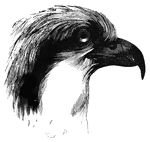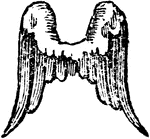Clipart tagged: ‘feathers’
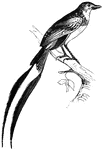
Tricolored Alectrurus
Native to South America, the tricolored alectrurus measures only six inches in length.

Barbs
"The arrangement shown in fig. 22, where a, a, a, a, are four barbs in transverse section, viewed from…
Single Barbule
"Fig. 21. -A single barbule, baring barbicels and hooklets; magnified; after Nitzsch. ...barbicels (another…
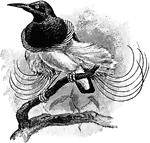
Twelve-Wired Bird of Paradise
The Twelve-Wired Bird of Paradise (Seleucidis melanoleucus) is a black and yellow bird of paradise named…
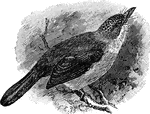
Criniger
A genus of birds. So called from the hair-like filaments with which some of the feathers end.

Pterylosis of Cypselus Apus
"Fig. 24. - Pterylosis of Cyoselus apus, drawn by Coues after Nitzsch; right hand upper, left hand lower,…
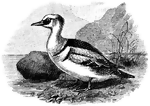
Smew - A Merganser or Fishing Duck
Mergellus albellus. "A small merganser or fishing duck...The male in adult plumage is a very beautiful…

Wing of an Eagle
"The more angular the wing of birds - that is to say, the longer the feathers on the edge of the wing…

Feather
One of the growths, generally formed each of a central quill and a vane on each side of it, which make…
Feather Shaft
"The feathers are horny productions, consisting of a hollow tube or barrel and a stem rising from it."

Structure of a Feather
"Fig. - 20 - Two barbs, a, a, of a vane, bearing anterior, b, b, and posterior, c, barbules; enlarged;…

Feather Tube
"The feathers are horny productions, consisting of a hollow tube or barrel and a stem rising from it."
Feather Web
"The feathers are horny productions, consisting of a hollow tube or barrel and a stem rising from it.…

Flysnapper on a Branch
The flysnapper or phainopepla (Phainopepla nitens) is a bird in the Ptilogonatidae family of silky-flycatchers.
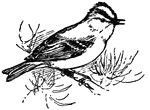
Golden-Crested Wren
Also known as the Kinglet, the Golden-Crested Wren (Regulus cristatus) is the smallest of European birds.…
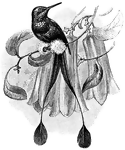
Racket-Tailed Hummingbird
Spathura underwoodi. The Spathura is a "remarkable genus of Trochilidae, containing hummingbirds with…
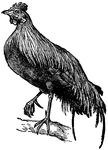
Jungle-fowl
Jungle-fowl is a general name given to the members of the genus Gallus. The red jungle-fowl, G. jerrugineus,…

Wing of Kamichi, or Crested Screamer
"The feathers are horny productions, consisting of a hollow tube or barrel and a stem rising from it."
A Feather from the Tail of a Kingbird
"Fig. 23 - A feather from the tail of a kingbird, Tyrannus carolinensis, almost entirely pennaceous;…
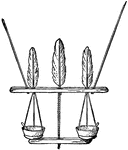
Eskimo Lamp
"Hanging lamp from Nushagak in Southern Alaska. It is suspended from the framework of the tent by cords.…

Lyre-bird
"The Lyre-bird of Australia, Menura superba, to show the unique lyrate shape of the tail." "... the…
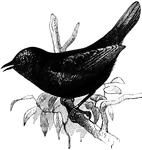
Magellanic Tapaculo
Scytalopus magellanicus. "A genus of South American formicarioid passerine birds, of the family Pteroptochidae.…
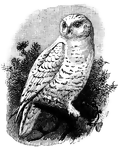
Snow Owl
Nyctea scandiaca." The great white or snowy owl, Strix nyctea or Nyctea scandiaca, inhabiting arctic…
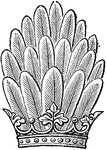
Panache
"A plume of feathers, generally those of the peacock, set upright, so as to form a crest. The Panache…
Wing of a Penguin
"Besides flight, birds possess other means of locomotion, being formed for walking, swimming or flying,…
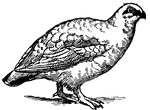
Rock Ptarmigan Winter Plumage
The winter plumage of a Ptarmigan, a grouse of the genus Lagopus. Usually a light reddish brown tint,…
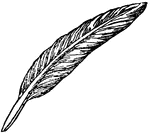
Quill
A transparent body, with usually three sides and two equal and parallel triangular ends or bases.
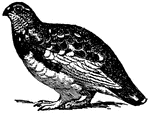
Rock Ptarmigan Summer Plumage
The winter plumage of a Ptarmigan, a grouse of the genus Lagopus. Usually a light reddish brown tint,…
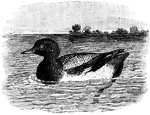
Scaup, a Common Duck
"A duck, Fuligula or Fulix marila and related species. The common scaup inhabits Europe, Asia, and North…
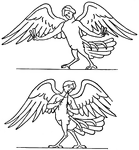
Sirens on a Greek Funeral Marble
"In Greek mythology, one of two, or three, or an indeterminate number of sea-nymphs who by their singing…
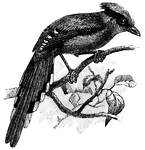
Sirgang
"The so-called green jackdaw of Asia, Cissa sinensis. The sirgang inhabits the southeastern Himalayan…
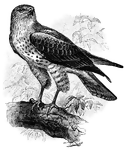
Snake Buzzard, Also Called a Short-Toed Eagle
Circaetus gallicus is a "bird of prey inhabiting all the countries bordering the Mediterranean, and…
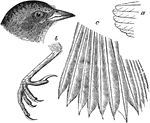
The Details of a Seaside Sparrow
"Ammodramus. Seaside Sparrow. Bill remarkably slender and lengthened for this family, with culmen toward…

Generic Details of a Thrush
"Generic details of a Myiadestes townsendi (Townsend's Flycatching Thrush); bill and foot nat. size,…

Wings Erect
"WINGS ERECT. Wings are called erect when their long feathers point upwards." -Hall, 1862

Late 19th Century Winter Dress
This late 19th century winter dress is designed with a cape that is worn over the dress and a scarf.…


